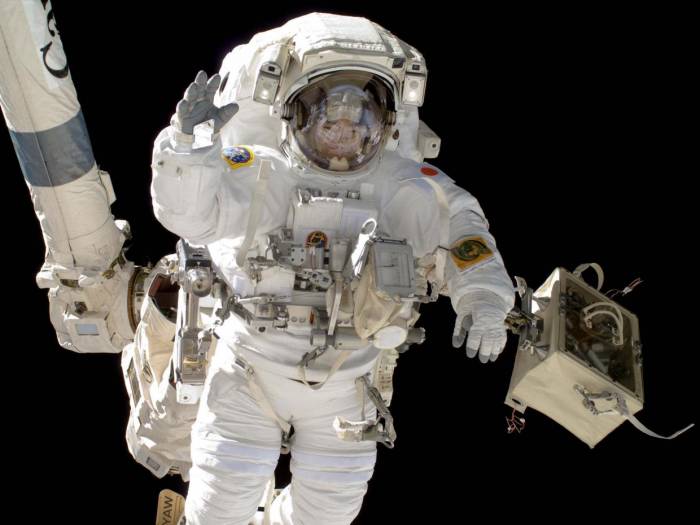Using microbes to break down solid and liquid waste, they created the protein and fat-rich substance.
“We envisioned and tested the concept of simultaneously treating astronauts’ waste with microbes while producing a biomass that is edible either directly or indirectly, depending on safety concerns,” said Professor Christopher House.
The microbe researcher at Pennsylvania State University added: “It’s a little strange, but the concept would be a little bit like Marmite or Vegemite, where you’re eating a smear of ‘microbial goo.’”
Food supply is a major hurdle when planning lengthy space flights.
Growing food on board a spacecraft is energy and water intensive, whereas carrying food from Earth takes up a room while increasing the craft’s mass and therefore fuel costs.
Recycling waste into nutritious food is one solution to this problem.
Professor House and his colleagues outlined a method for producing a nutrient-rich substance from human waste using microbes, in their study published in the journal, Life Sciences in Space Research.
The method involves anaerobic digestion, a process that refers to the breakdown of materials in the absence of oxygen. It is considered an efficient way of breaking down biodegradable matter.
“Anaerobic digestion is something we use frequently on Earth for treating waste,” said Professor House. “What was novel about our work was taking the nutrients out of that stream and intentionally putting them into a microbial reactor to grow food.”
The human waste anaerobic digestion process produced methane gas, which the scientists then used to grow another type of microbe called Methylococcus capsulatus.
This microbe strain is currently used as animal feed. With 52 percent protein and 36 percent fat content, it has potential as a food source for humans as well.
The researchers said that while their method is not ready for application yet, it provides a new model for creating food on board spacecraft.
“Imagine if someone were to fine-tune our system so that you could get 85 percent of the carbon and nitrogen back from waste into protein without having to use hydroponics or artificial light,” said Professor House.
“That would be a fantastic development for deep-space travel.”
Some human waste is already recycled aboard the International Space Station, where water is extracted from astronaut urine. Solid waste, on the other hand, is simply ejected into space.
Besides efficiently producing a new food source, the new method is also able to break down waste quickly.
“That’s why this might have the potential for future space flight,” said Professor House. “It’s faster than growing tomatoes or potatoes.”
The original article was published in the Independent.
More about: astronauts

















-1741770194.jpg&h=190&w=280&zc=1&q=100)






-1741765030.jpg&h=190&w=280&zc=1&q=100)























